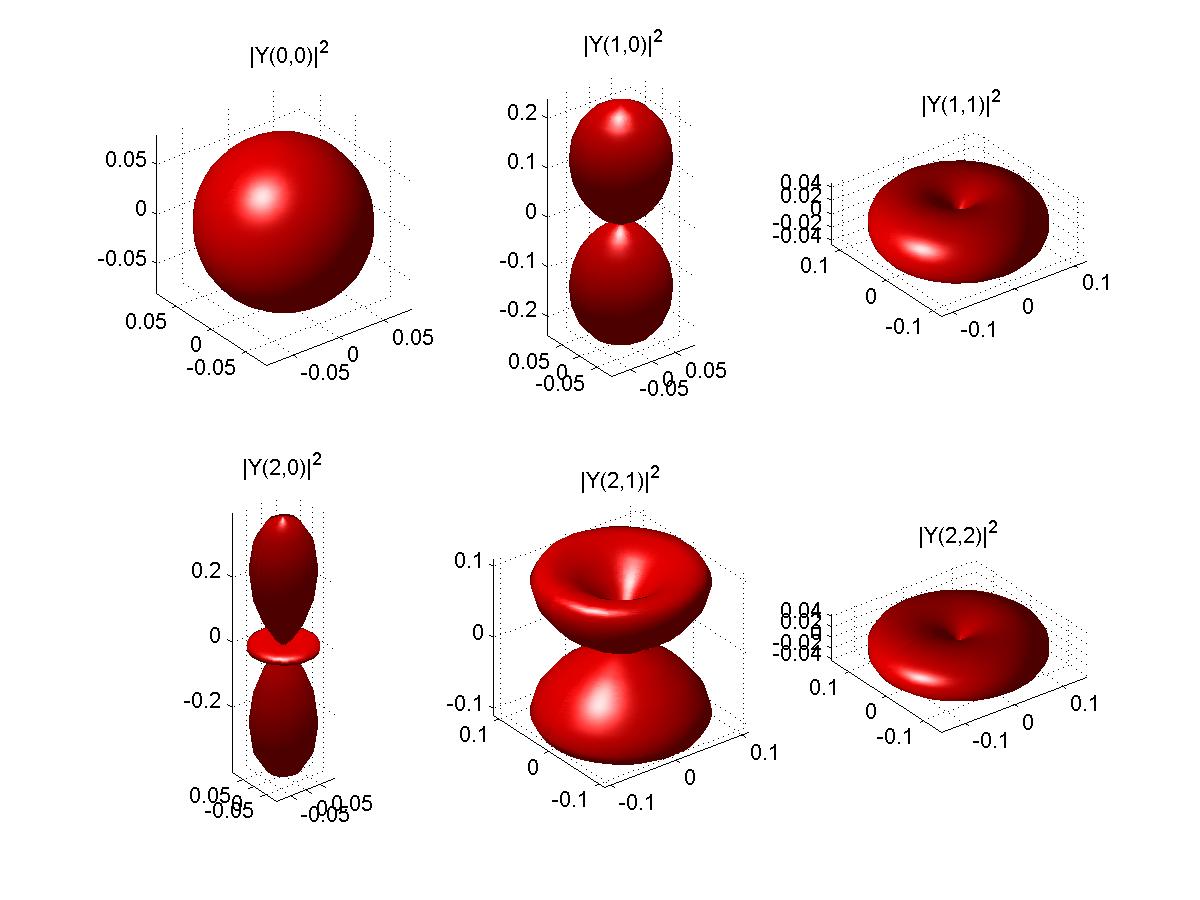The spherical harmonics squared are real and represented below:

Many formulas and some other plots ( not the same as the above complex functions) of spherical harmonics are at http://mathworld.wolfram.com/SphericalHarmonic.html
Matlab program for sperical harmonic squared followed by SH.m for complex spherical harmonic
%SHsquared.m %Spherical Harmonics clear; clc; %[X,Y]=meshgrid(-8:.5:8); %R=sqrt(X.^2+Y.^2) + eps; %Z=sin(R)./R; %mesh(X,Y,Z,'EdgeColor','black') %this was the sinc function THIS CODE IS DOWN FOR REJUVENATION title(' Y(1,0)'); axis equal; %%%%%%%%%%%%% %mesh(X,Y,Z,'EdgeColor','black') subplot(2,3,4); camlight left; lighting phong axis equal; %mesh(X,Y,Z,'EdgeColor','black') camlight left; lighting phong title('Y(2,2)'); axis equal; %surf(X,Y,Z) %colormap hsv %colorbar %surf(X,Y,Z) %colormap hsv %alpha(.4) % alpha ranges from 0(completely transparent to 1 (not transparent) %surf(X,Y,Z,'FaceColor','red','EdgeColor','none') %camlight left; lighting phong %subplot(2,3,2); %surfl(X,Y,Z) %shading interp; %colormap(pink); %axis square; %title('prob with Y(1,1)^2 / sin(theta)'); %this was the sinc function %surf(X,Y,Z,abs(sqrt(X*X+Y*Y))) %surfl(X,Y,Z) %shading interp; %colormap(pink); axis equal; %%%%%%%%%%%% THE CODE IS DOWN FOR REJUVENATION %%%%%%%%%%%%% %mesh(X,Y,Z,'EdgeColor','black') surf(X,Y,Z,'FaceColor','red','EdgeColor','none') camlight left; lighting phong axis equal; %%%%%%%%%%%%%%%%%%%%%%%% %%%%%%%%%%%%%%%%%%%%%%% THE CODE IS DOEN FOR REJUVENATION %mesh(X,Y,Z,'EdgeColor','black') %was shown subplot(2,3,6); surf(X,Y,Z,'FaceColor','red','EdgeColor','none') camlight left; lighting phong %surf(X,Y,Z,'FaceColor','red','EdgeColor','none') %camlight left; lighting phong %subplot(2,3,2); %surfl(X,Y,Z) %shading interp; %colormap(pink); %axis square;
